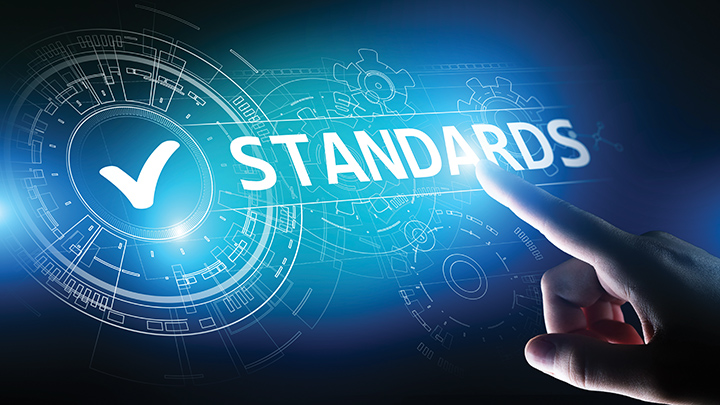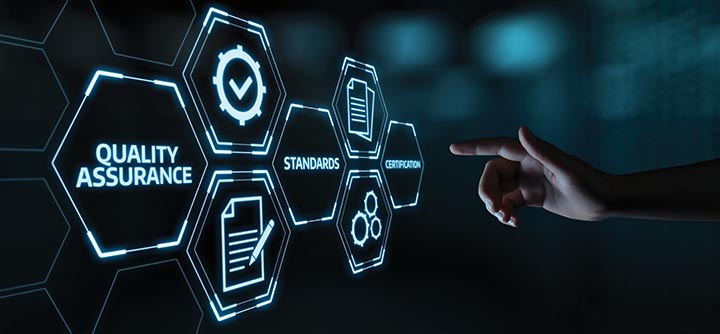Maximizing Information Density with 12N Codes
By Dr. Ron Lembke, University of Nevada
The 12N QR codes developed by the RLA’s Standards Committee offer the ability to provide far more information per square inch than traditional text.
12N QR Code Format
The 12N QR code format lets companies provide any information in an easy-to-scan QR code. Regular QR codes can only contain one field of information. But a 12N QR code can contain as many fields as desired, up to a maximum of over 4,000 characters.
12N codes allow multiple fields by inserting a Field Identifier in front of each piece of information, which identifies the nature of the information. This way the customer or supply chain partner who scans the 12N code will know for sure what each piece of information represents, exactly.
Many companies and industries will benefit from a compact way to present information to customers in a format that any can could access.
Labeling Requirements
For many consumer products, there are requirements by the US Food and Drug Administration (FDA) about the kinds of information that must appear on product packaging. For example, food products must inform consumers about nutrition information, ingredients, allergens and potentially appearing allergens, serving size, package contents.
Marketing Requirements
In addition to federal legal requirements, there is additional information that may be standardized across an industry that the producer must include in the packaging, to be competitive:
- Certified organic, kosher, vegan, etc.
- Sustainability information: sustainable forestry, free-range, ethically-sourced or locally-sourced
- Underwriter Laboratories certification
- SO 9000 certification
In addition, a company must provide enough advertising copy and images to present an effective case to persuade the potential customer to purchase the item.
For both marketing purposes, and after-sales support, the written information on the product and/or its packaging is clearly a key source of information for the customer. They can always go to the manufacturer’s website, or search the internet for the information, but the package in hand is often the first place they go.
The Importance of Information Density
Given all of the information that must be included in the packaging, and all of the needs that they must meet with that information, companies must make very careful choices about how they present this information.
Limited Real Estate
The surface area, or “real estate” to present information is limited on any product or package, but there are many situations where the challenges are especially great. For example, on many food products, and health and beauty aids (HBA), or medical products, the amount of surface area of packaging is usually quite small. The smaller the volume of the packaging, the less space there is for information.
Manufacturers have to balance three competing forces: the desire to provide more information, the need marketing and branding needs of the package, and the limits of human eyes to read tiny fonts. In order to make the product readily identifiable and recognizable to consumers, product logos and branding information and images need to be present. The marketing function of a company would generally like to have as much surface area as possible available for these purposes.

Minimum Font Size
Unfortunately for companies’ marketing wishes (but fortunately for consumers) the FDA requires that certain information (ingredients, serving size, potential allergens, etc.) must be provided to the consumer for food products. These letters must be no less than 1/16th of an inch high for the lower-case letter “o,” and must not be more than three times as high as they are wide.
For over-the-counter, non-prescription drugs, the FDA requires that the minimum font size is 6 point, with a space between lines of at least 0.5 point.
Information Density of Text for Given Font Size
The point size of a font is the distance from the top of the tallest character to the bottom of the lowest character. A point is defined as 1/72nd of an inch.
The smallest generally allowable font size for text on packaging is 6 point, and using the smallest allowable space between lines there can be 72/6.5 = 11.1 lines per vertical inch.
The average character width for Helvetica Neue has been estimated as 26.88 characters per inch, using a 6 point font.
As Lembke (2020) shows, then, the greatest allowable density, for a 6-point font, with 11.1 lines per vertical inch, and 26.88 characters per linear inch, yields a theoretical maximum of 298 characters per square inch.
It must be notable that this is the legal minimum which would only be practically readable by a very small percentage of customers, under ideal circumstances. For a more readable (but still very small small) font size of 10 point, the theoretical minimum is still a surprising 92 characters per square inch.
Desirable Font Size
Federal regulations prescribe the minimum font size, but clearly, small font sizes cannot readily be read by all consumers. Important questions that must be considered include:
• What size can a typical consumer comfortably read? • What size can an older consumer comfortably read?
Just because a tiny font is legal does not mean it is a good idea to use on packaging.
QR Codes – Two-dimensional
QR codes are always square, and the number of rows and columns is determined by amount of data to be stored. As the size grows, the number of interior targets increases.
For alphanumeric QR codes, 5.5 bits are needed for each character of data. So the number of bits required to present N characters is N * 5.5, and the number of rows and columns is equal to 
Dimensions of QR Code
Given the number of rows and columns to be displayed, the size it must be printed depends on several factors, including:
- Printing process (for example, ink-jet vs laser printer vs offset printing)
- Printing surface (for example newspaper vs office paper)
- Camera resolution (commonly measured in megapixels?)
- Distance between camera lens and surface (magazine vs poster vs billboard)
The closer the camera is to the QR code, the smaller the QR code can be. The better the quality of the camera sensor, the smaller it can be. Higher quality printing processes and surfaces also allow smaller QR codes.
Taking these factors into account, for printing for close-up viewing, it is commonly recommended that pixels be no smaller than 0.4 mm.

Information Density of QR Codes
Using 5.5 bits per alphanumeric character, and 0.4mm pixel dimensions, it can be shown (Lembke, 2020), that on average, 1.136 characters can be stored per square millimeter, which is equivalent to 733 characters per square inch, which is far greater density than what is available using a text-based approach.
Most importantly, this density comes at no cost to the end consumer. After they scan the information from the QR code, they can display the information on their phone using as large a font as they like.
Conclusion
We have seen that the smallest possible font size, per US FDA guidelines, is 6 point font, which results in a theoretical maximum average value of 298 characters per square inch. If the font is increased to a more generous 10 point font (which is larger, but still difficult to read except under ideal conditions) the theoretical maximum average value is 92 characters per square inch.
By comparison, a QR code allows a company to store 733 characters per square inch. This means a QR code can store 2.5 times as much information, per square inch, as the tiniest font allowed by the FDA. Compared to a more readable 10 point font, a QR code can store 8 times as much information, per square inch.
A QR code can store 8 times as much information, per square inch, as a just-barely readable text-based display. And the QR code has the additional benefit of being much more convenient for the end user, who can display it as large as they want to, on the screen of their cell phone.
Regular QR codes only allow the storage of a single field of information. But a 12N QR code allows a firm to store as many fields of information as desired, in an extremely space-efficient format.
Clearly, 12N QR codes offer many advantages that companies should consider for presenting information to their customers.
For more information about the RLA’s 12N standard, visit https://rla.org/page/sqrl-overview
For more information about the RLA’s Standards Committee, visit https://rla.org/committee/standards
References
Lembke, Ronald, (2020), “Improved Product Information Density with Smart QR Labels,” working paper.
 Dr. Ron Lembke
Dr. Ron LembkeRon Lembke is an Associate Professor of Supply Chain Management at the University of Nevada, and Director of the Summer Logistics Internship Program. He received his Ph.D. and MS degrees in Industrial Engineering from Northwestern University, and his undergraduate degree in mathematics with a computer science concentration from St. Olaf College in Northfield, Minnesota.
Ron is co-author, with Dr. Dale Rogers, of 'Reverse Logistics for Competitive Advantage,' a forthcoming CSCMP Explores publication, and 'Going Backwards: Reverse Logistics Trends and Practices,' published by the Reverse Logistics Executive Council.
His reverse logistics consulting experience includes projects with a number of large American companies, and he has been an invited speaker on Reverse Logistics in Brazil, Canada, Colombia, England, France, Mexico, and Spain. In the Fall of 2005, Ron was on sabbatical as a visiting professor at the corporate offices of 3M in St. Paul, Minnesota.
His research has appeared in journals such as the Journal of Business Logistics, The California Management Review, and The International Journal of Physical Distribution and Logistics Management. He is a two-term Past President of the Logistics Section of INFORMS, the Institute for Operations Research and the Management Sciences.